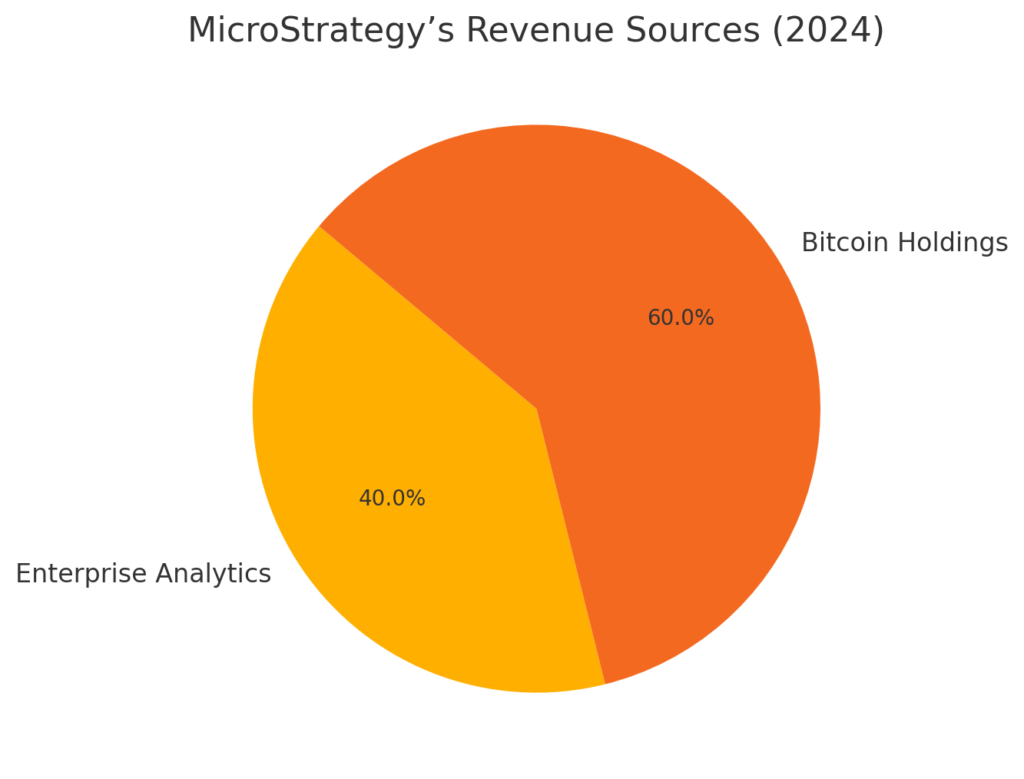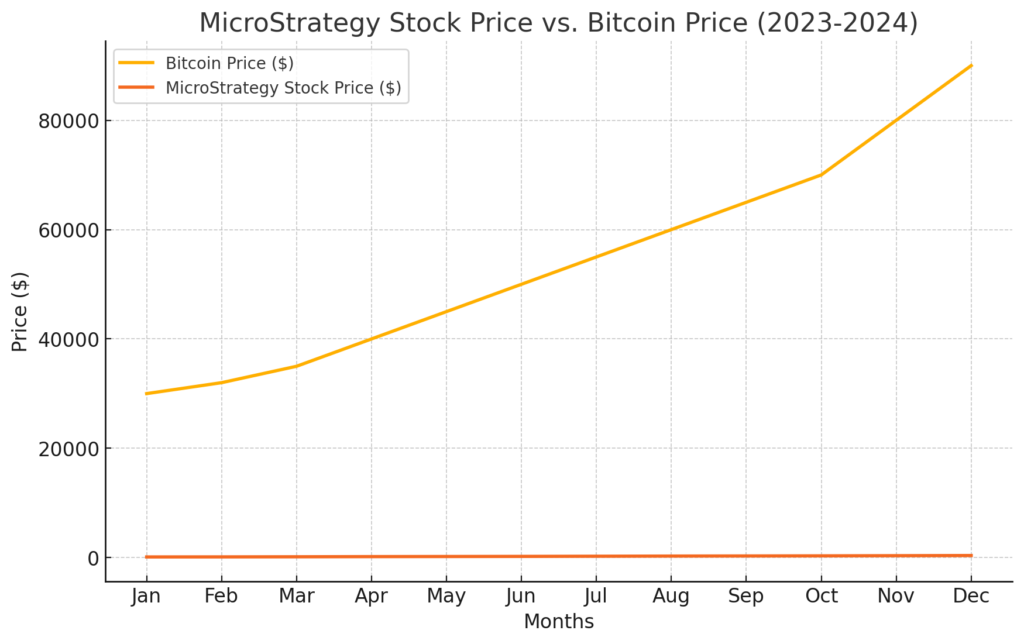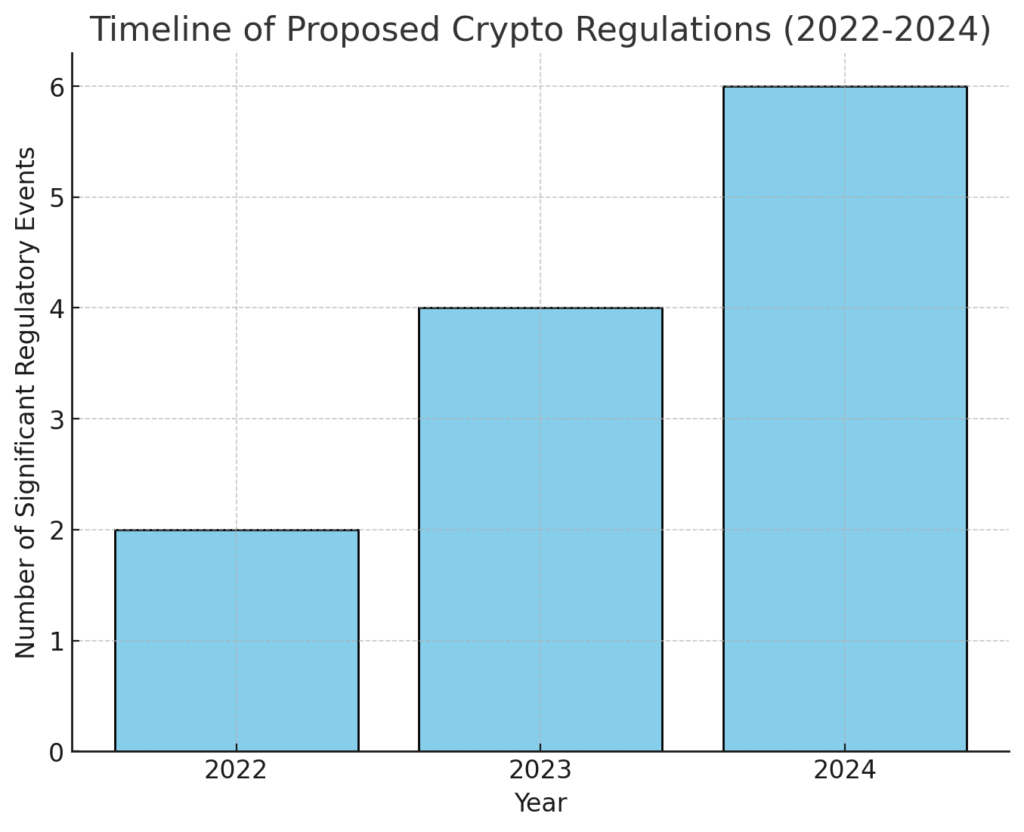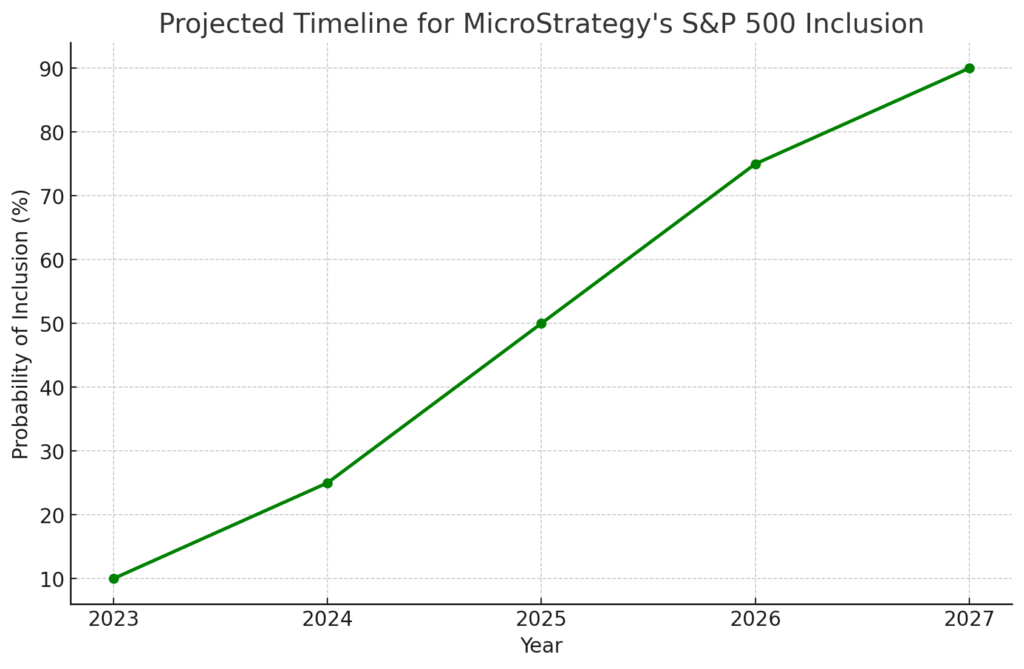As of November 18, 2024, Bitcoin is trading at $91,403, reflecting a 1.84% increase from the previous close. MicroStrategy’s stock (MSTR) is priced at $378.60, up 11.14%. With these numbers in mind, the question arises: when will MicroStrategy, a company increasingly synonymous with Bitcoin, join the prestigious S&P 500? Let’s dive in.
MicroStrategy’s Bold Bitcoin Bet
Under the leadership of Michael Saylor, MicroStrategy has acquired over 331,200 Bitcoins, valued at approximately $30 billion. This move has essentially turned the company into a pseudo Bitcoin ETF, attracting both praise and criticism. While Bitcoin enthusiasts hail MicroStrategy as a pioneer, skeptics question its deviation from traditional enterprise analytics. Can a company so intertwined with cryptocurrency prove its eligibility for a mainstream index?
MicroStrategy’s bold strategy positions it as a leader in corporate Bitcoin adoption. However, it also exposes the company to massive risks due to Bitcoin’s volatility. If Bitcoin’s price were to drop significantly, it could heavily impact MicroStrategy’s financial health and stock performance, potentially delaying its eligibility for the S&P 500.
Financial Performance and S&P 500 Eligibility
For inclusion in the S&P 500, MicroStrategy must meet strict profitability, market capitalization, and operational consistency criteria. Recent accounting changes proposed by the Financial Accounting Standards Board (FASB) could positively impact its earnings profile, enhancing its chances. Still, the road ahead requires more than just strong Bitcoin performance—it needs stable core business growth.
MicroStrategy’s core business of enterprise analytics remains overshadowed by its Bitcoin strategy. The company must demonstrate that it can generate consistent revenue from its software solutions to complement its Bitcoin holdings. A diversified revenue stream could reassure investors and decision-makers that MicroStrategy is more than a Bitcoin proxy.
MicroStrategy’s Revenue Sources (2024)

Note: Graph illustrating the proportion of revenue from enterprise analytics vs. Bitcoin holdings.
Market Reactions and Stock Volatility
MicroStrategy’s stock has become a proxy for Bitcoin’s performance, with its price moving almost in lockstep with the cryptocurrency. While this correlation can be a boon during bullish markets, it also raises concerns about its risk profile. Investors and analysts continue to debate whether this volatility aligns with the steady nature of companies typically listed in the S&P 500.
The company’s stock has shown extreme fluctuations, with highs and lows determined almost entirely by Bitcoin’s performance. This dependency on Bitcoin creates a risk of financial instability, making some institutional investors hesitant to fully back the company. Greater independence from Bitcoin would likely strengthen its appeal for the S&P 500.
MicroStrategy Stock Price vs. Bitcoin Price (2023-2024)

Note: Graph showing the correlation between MSTR stock and Bitcoin price movements.
Broader Implications for the Crypto Market
If MicroStrategy secures a place in the S&P 500, it could serve as a watershed moment for cryptocurrency adoption in mainstream finance. Institutional investors would gain indirect exposure to Bitcoin, further legitimizing it as an asset class. However, critics argue that this move could also increase the financial system’s vulnerability to crypto market fluctuations.
The potential inclusion of MicroStrategy in the S&P 500 would signify a monumental shift, integrating digital assets into the traditional financial landscape. However, the move could set a precedent for other crypto-heavy companies, sparking debates about the role of volatile assets in the broader economy.
Regulatory Hurdles and Accounting Challenges
MicroStrategy’s journey to the S&P 500 is not without obstacles. The company must navigate evolving crypto regulations and adopt new accounting standards for digital assets. While these changes may improve transparency, they could also introduce complexities that delay its eligibility. For now, regulatory uncertainty remains a major hurdle in its quest.
Regulatory developments in the U.S. and globally could impact MicroStrategy’s roadmap significantly. A favorable ruling, such as clearer guidelines for digital asset reporting, could boost its chances. On the other hand, stricter regulations or adverse changes in Bitcoin taxation policies could derail its ambitions.
Timeline of Proposed Crypto Regulations (2022-2024)

Note: Graph showing key regulatory changes and their potential impact on companies like MicroStrategy.
Forecast: When Could MicroStrategy Be Listed in the S&P 500?
Predicting the timeline for MicroStrategy’s inclusion in the S&P 500 requires balancing optimism with reality. With Bitcoin’s rising value and new accounting rules favoring digital asset reporting, analysts suggest MicroStrategy could meet the necessary benchmarks by mid-2025. If Bitcoin adoption accelerates and MicroStrategy diversifies its revenue streams, its inclusion in the S&P 500 could become a reality within the next 2-3 years.
However, achieving consistent profitability and reducing its dependency on Bitcoin as its primary asset remain significant challenges. Navigating regulatory uncertainties also poses risks. Yet, if MicroStrategy aligns its strategy with market expectations, it could redefine what it means to be part of a traditional financial index.
Projected Timeline for MicroStrategy’s S&P 500 Inclusion

Note: Graph illustrating the projected timeline for MicroStrategy’s potential inclusion in the S&P 500, considering various factors such as market capitalization, profitability, and regulatory developments.
The company’s success depends on balancing its bold Bitcoin strategy with financial stability and operational excellence. Will MicroStrategy’s inclusion be the turning point for Bitcoin in traditional finance, or will its risks keep it out of the S&P 500? The next few years will determine whether it sets a new standard or remains on the sidelines.
